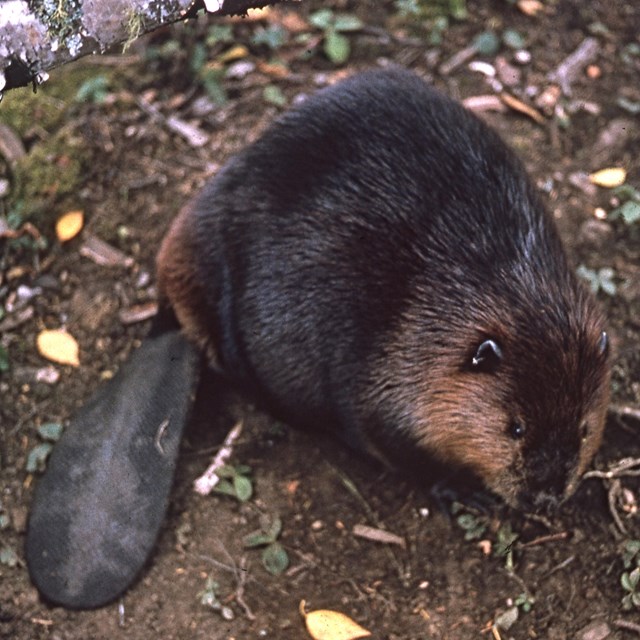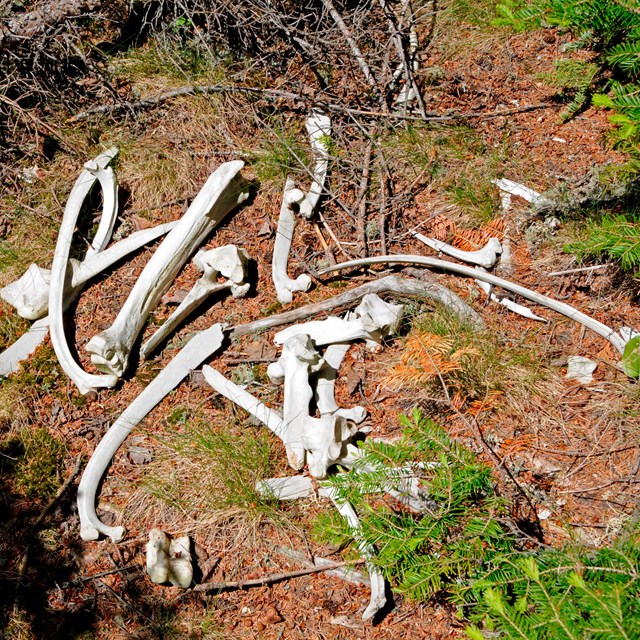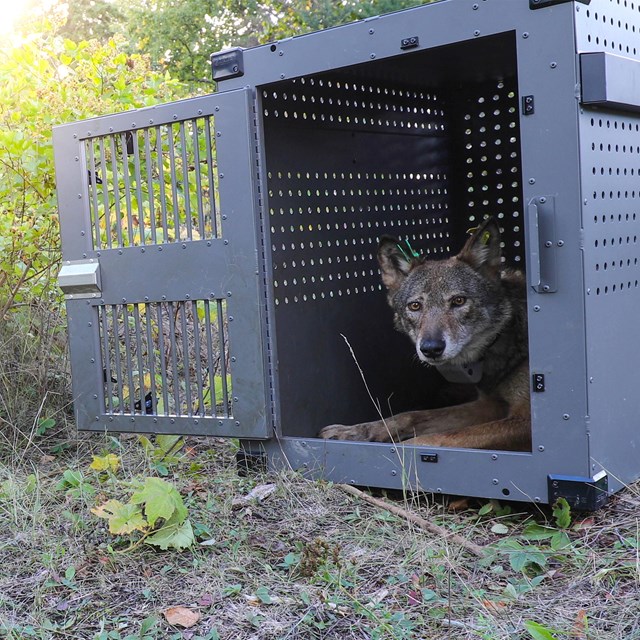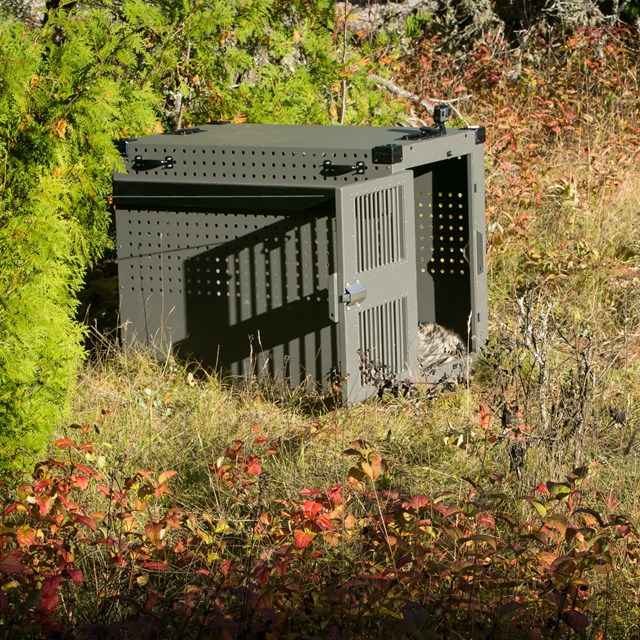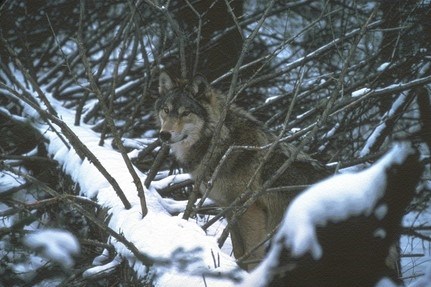
NPS The gray wolf (Canis lupus), also known as the timber wolf, has been the prevailing predator of Isle Royale National Park since its arrival to the island in the late 1940s. Characteristics The gray wolf gets its name from the thick, gray fur coat covering its body. While most wolves are gray, their coats can range in color from reddish to solid black. On average, adult wolves are five to six feet in length, with females weighing 50-85 pounds and males weighing 70-110 pounds. A wolf will hunt small prey such as snowshoe hare and beaver, however, they often live in small packs of four to eight members and work together hunting larger prey like moose. Wolf Population It is largely accepted that wolves arrived on Isle Royale by crossing an ice bridge that formed between the island and the Canadian mainland during the winter of 1948. Since this initial population of island wolves, the population has varied from 50 animals in 1980 to a low of two animals between 2016 and 2018. Wolf population variation is driven by the availability of its primary food source of older moose and calves, and the spread of canine diseases to the island. Furthermore, genetic inbreeding has led to physical deformities and has, at times, resulted in low productivity and survival. 
NPS Wolf & Moose PopulationThe prey to predator relationship of Isle Royale's moose and wolves has a direct effect on both species' populations. Wolves help stabilize the moose herd by preying on the old, young, injured and ill. Strong moose numbers allow for stable winter hunting for the wolves. Check out the correlation between wolf and moose populations of Isle Royale since 1980. Where Are The Wolves? Isle Royale wolves can be found throughout the island. They are very elusive, but your best chance of seeing them would be along lakeshores, open areas, or hiking trails. 
NPS BreedingIn the hierarchy of wolf packs, there is typically one dominant female who breeds with the dominant male. A female wolf can breed by the age of two. Breeding occurs in February and March with pups born in April and May. A typical litter consists of four to seven pups, which will remain in the den for their first six to eight weeks. Safety in a Wolf SanctuaryWolves are usually wary of people and will leave an area when they hear or smell humans. Help keep yourself and Isle Royale wolves safe by following these guidelines:
|
Last updated: September 17, 2024

